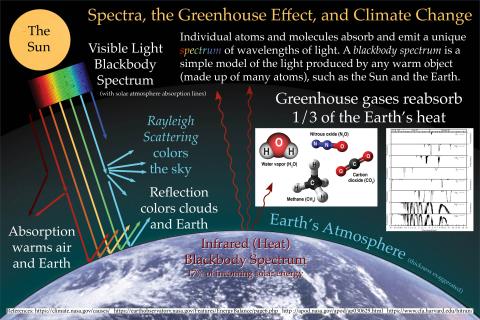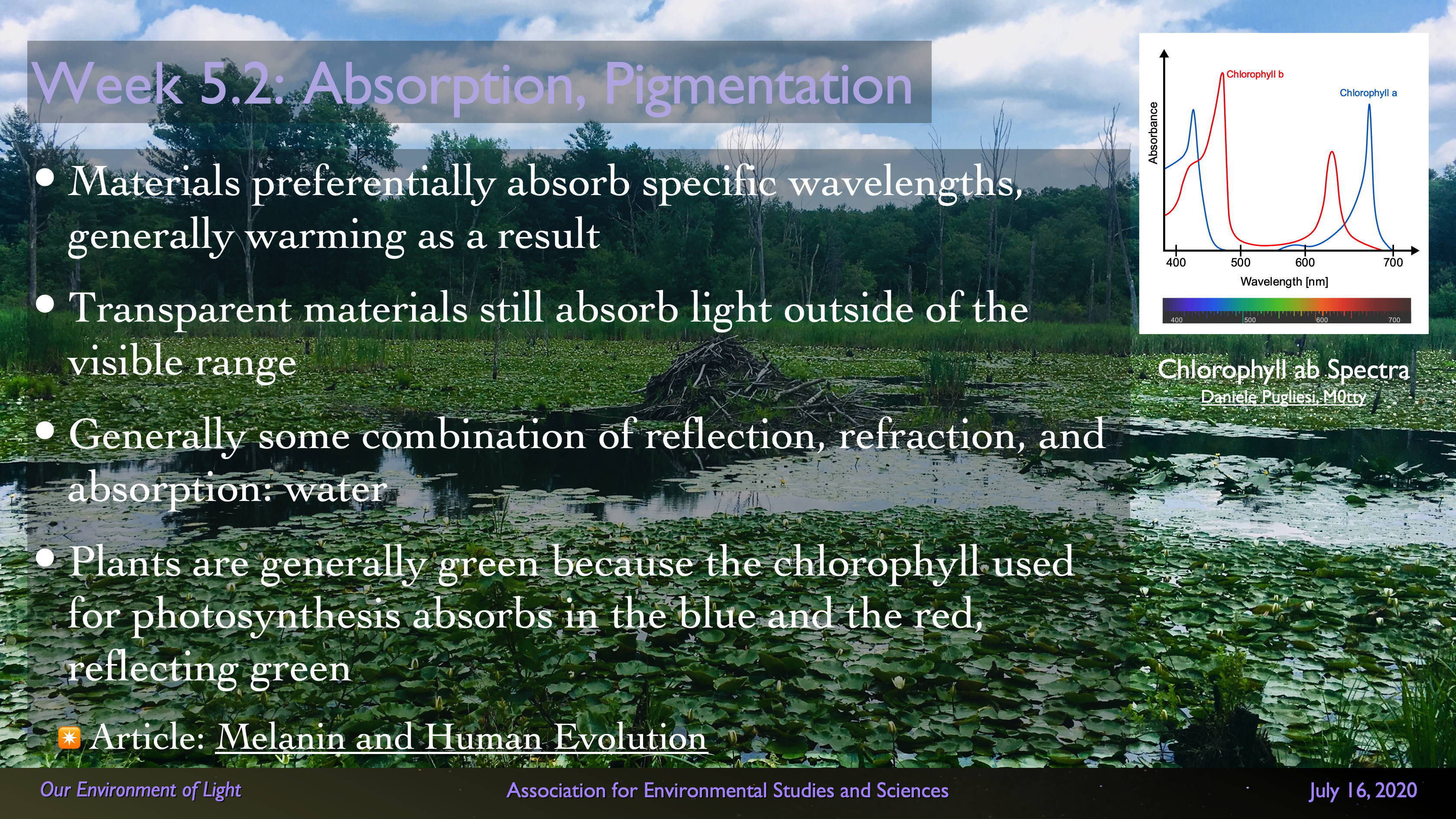In the fall of 2019, I designed and taught an Honors Discovery Seminar entitled Our Environment of Light in the Commonwealth Honors College at the University of Massachusetts. It was a 1-credit course, meeting one day of week for one hour:
Course Description: We are bathed in an ocean of light, from the daily rising and setting of the Sun, to moonlit nights, to the darkest skies that still sparkle with thousands of stars. We also routinely use artificial light to extend our activities through the night, often in ways that disrupt our biology and the natural environment. Light can therefore be both beautiful and destructive, but because of its ubiquity we may never stop to think about the origins of its positive and negative effects. In this interdisciplinary course we will examine the nature of light and its sources, its interaction with the materials on which it falls, its effects on human and animal behavior, and the subtle ways that our bodies respond to its presence and absence. We will consider its history from oil lamps to LEDs powered by solar panels, and investigate the ways that artists, astronomers, and urban developers use light, along with environmental, medical, and legal consequences. This course will include topical literature as well as computer modeling of lighting through geographic information systems and 3D graphics programs. Students will also engage in individual research in an area of their interest, leading to a final project and presentation.
I started thinking about this course while preparing a poster and spectra demonstration for the 2017 Earth Day Sustainability Festival on the Amherst Common, which followed the first March for Science (click for full size poster):

As a physicist with environmental interests, I felt that to have more than a cursory understanding of the greenhouse effect it was also important to have an understanding of the behavior of light. And this also helps one to understand the interaction of light with humans, animals, and plants, as well as the effects of the lighting systems that we use in our homes and cities. This includes light pollution, a particular interest of mine. This course was the result of putting all of these environmentally related topics together in a logical order.
For more details, please take a look at this presentation I gave at the 2020 Annual Conference of the Association for Environmental Studies and Sciences:
